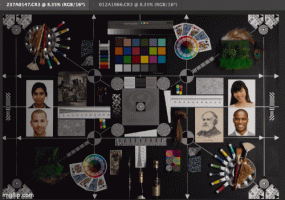Keep in mind that the ‘studio test’ has moved buildings and had a lighting overhaul the past years. DPreview themselves have remarked that the lights used have degraded over time, as have the prints. So be cognizant of that when trying to compare colour casts.I am unsure what is exactly is being presented here. They appear to be the post-processed jpg's, when I download the RAW's on the site I see very different results in Lightroom with a clear advantage to the R5 mk ii with +6ev (more natural tones vs a red / purple hue, significantly less noise in the dark areas, etc):
View attachment 218816
In their web preview I would agree that the R5 appears slightly better in areas, however when I look at the raw files the mk ii looks overall way better to me. Was the R5 configured with noise reduction maybe? I am not honestly not sure.
I am curious what others who have downloaded the raw files think.
Upvote
0

